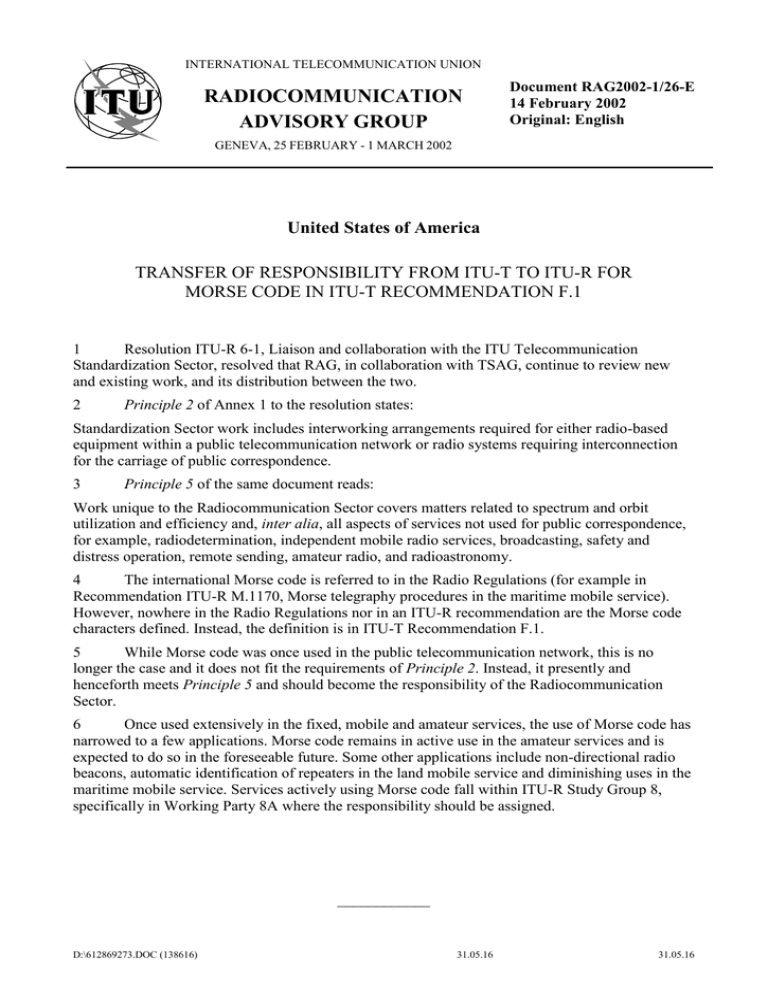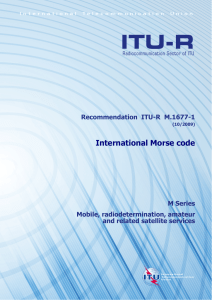RADIOCOMMUNICATION ADVISORY GROUP
advertisement

INTERNATIONAL TELECOMMUNICATION UNION RADIOCOMMUNICATION ADVISORY GROUP Document RAG2002-1/26-E 14 February 2002 Original: English GENEVA, 25 FEBRUARY - 1 MARCH 2002 United States of America TRANSFER OF RESPONSIBILITY FROM ITU-T TO ITU-R FOR MORSE CODE IN ITU-T RECOMMENDATION F.1 1 Resolution ITU-R 6-1, Liaison and collaboration with the ITU Telecommunication Standardization Sector, resolved that RAG, in collaboration with TSAG, continue to review new and existing work, and its distribution between the two. 2 Principle 2 of Annex 1 to the resolution states: Standardization Sector work includes interworking arrangements required for either radio-based equipment within a public telecommunication network or radio systems requiring interconnection for the carriage of public correspondence. 3 Principle 5 of the same document reads: Work unique to the Radiocommunication Sector covers matters related to spectrum and orbit utilization and efficiency and, inter alia, all aspects of services not used for public correspondence, for example, radiodetermination, independent mobile radio services, broadcasting, safety and distress operation, remote sending, amateur radio, and radioastronomy. 4 The international Morse code is referred to in the Radio Regulations (for example in Recommendation ITU-R M.1170, Morse telegraphy procedures in the maritime mobile service). However, nowhere in the Radio Regulations nor in an ITU-R recommendation are the Morse code characters defined. Instead, the definition is in ITU-T Recommendation F.1. 5 While Morse code was once used in the public telecommunication network, this is no longer the case and it does not fit the requirements of Principle 2. Instead, it presently and henceforth meets Principle 5 and should become the responsibility of the Radiocommunication Sector. 6 Once used extensively in the fixed, mobile and amateur services, the use of Morse code has narrowed to a few applications. Morse code remains in active use in the amateur services and is expected to do so in the foreseeable future. Some other applications include non-directional radio beacons, automatic identification of repeaters in the land mobile service and diminishing uses in the maritime mobile service. Services actively using Morse code fall within ITU-R Study Group 8, specifically in Working Party 8A where the responsibility should be assigned. ____________ D:\612869273.DOC (138616) 31.05.16 31.05.16


